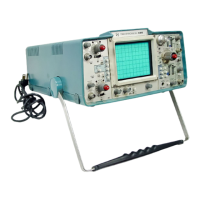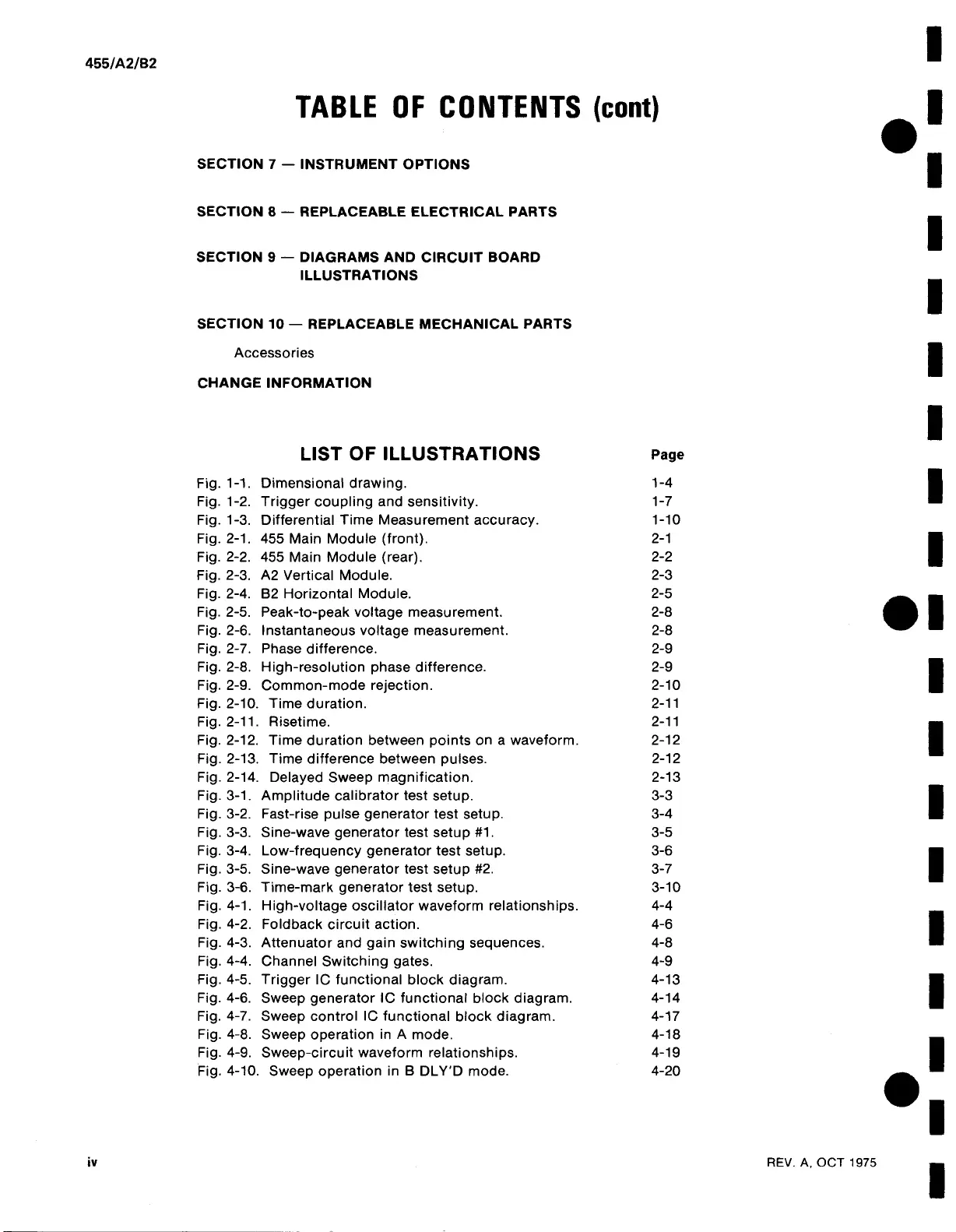TABLE OF CONTENTS (cont)
SECTION 7 — INSTRUMENT OPTIONS
SECTION 8 — REPLACEABLE ELECTRICAL PARTS
SECTION 9 — DIAGRAMS AND CIRCUIT BOARD
ILLUSTRATIONS
SECTION 10 — REPLACEABLE MECHANICAL PARTS
Accessories
CHANGE INFORMATION
LIST OF ILLUSTRATIONS Page
Fig. 1-1. Dimensional drawing. 1-4
Fig. 1-2. Trigger coupling and sensitivity. 1-7
Fig. 1-3. Differential Time Measurement accuracy. 1-10
Fig. 2-1. 455 Main Module (front). 2-1
Fig. 2-2. 455 Main Module (rear). 2-2
Fig. 2-3. A2 Vertical Module. 2-3
Fig. 2-4. B2 Horizontal Module. 2-5
Fig. 2-5. Peak-to-peak voltage measurement. 2-8
Fig. 2-6. Instantaneous voltage measurement. 2-8
Fig. 2-7. Phase difference. 2-9
Fig. 2-8. High-resolution phase difference. 2-9
Fig. 2-9. Common-mode rejection. 2-10
Fig. 2-10. Time duration. 2-11
Fig. 2-11. Risetime. 2-11
Fig. 2-12. Time duration between points on a waveform. 2-12
Fig. 2-13. Time difference between pulses. 2-12
Fig. 2-14. Delayed Sweep magnification. 2-13
Fig. 3-1. Amplitude calibrator test setup. 3-3
Fig. 3-2. Fast-rise pulse generator test setup. 3-4
Fig. 3-3. Sine-wave generator test setup #1. 3-5
Fig. 3-4. Low-frequency generator test setup. 3-6
Fig. 3-5. Sine-wave generator test setup #2. 3-7
Fig. 3-6. Time-mark generator test setup. 3-10
Fig. 4-1. High-voltage oscillator waveform relationships. 4-4
Fig. 4-2. Foldback circuit action. 4-6
Fig. 4-3. Attenuator and gain switching sequences. 4-8
Fig. 4-4. Channel Switching gates. 4-9
Fig. 4-5. Trigger 1C functional block diagram. 4-13
Fig. 4-6. Sweep generator 1C functional block diagram. 4-14
Fig. 4-7. Sweep control 1C functional block diagram. 4-17
Fig. 4-8. Sweep operation in A mode. 4-18
Fig. 4-9. Sweep-circuit waveform relationships. 4-19
Fig. 4-10. Sweep operation in B DLY'D mode. 4-20

